"Besides, I'm a gypsy at heart and I like to travel around." Reba McEntire
We got away early from Giulianova in the knowledge that the weather was going to deteriorate and with it being a long haul, we wanted to be able to take things at our own pace
. We had planned on the trip taking about six and a half hours and that worked out to be fairly accurate. Trish finally decided that enough was enough and that she would jump behind the wheel. Perhaps that is why the journey went so smoothly although at one point we got into the wrong queue at a toll station [blame the navigator – can't get good help when you need it] and she had to back out of that lane and slide across a couple of lanes before the next local version of Michael Schumacher arrived. We had ended up in a credit card lane and we are trying to stay off that form of payment as much as possible, cash being King.
The countryside changed after about three hours from the hilly Apennines to the flat plains of Puglia, it being the flattest of all the regions in Italy. This is a huge olive growing area and they stretch as far as the eye can see [although with the absence of hills that doesn't tend to be very far.] However, when you do get on a rise, you can see how far they stretch across the land
. We stopped after a couple of hours at an Autogrill. These provide good coffee and mostly very good food, both take away and restaurant – it’s just the gas that’s expensive. Fortunately, we had topped up before leaving Giulianova and by the time we got to Castro [560 km later] had only used half a tank. Another good reason to have a diesel car.
The weather held off for the first four hours of the trip but then deteriorated rapidly. By the time that we got to Castro Marina, it was raining heavily and blowing a gale...and remained that way for the next couple of days. Each night we had some spectacular electrical storms, one blowing the circuit breakers in our apartment. Fortunately, the budding Boy Scouts/Girl Guides were prepared and put our torches to use locating and reinstating the circuit breakers. Although it didn't help when the front panel fell off the fuse panel, exposing all of the wires [before we found our torches].
Regrettably, we also found that before we had arrived, the storm had knocked out the town wi-fi system so nipping down to the Piazza to log in as we thought we would be able to do, was off the agenda for the duration
. Very frustrating. To make matters worse, our apartment made a very good protective shield against cell phone microwaves so connecting to the outside world even by phone meant dashing out into the rain. Very, very frustrating.
We witnessed here another demonstration of the power of that mean lady, Mother Nature. We have seen large waves before, but those we saw down on the marina were right up there with mini tsunamis. Fortunately, all of the small/large harbours in this part of the world have centuries of experience with this sort of weather and its effect on the oceans. Each has a very substantial breakwater to provide a safe harbour for the locals, many of whom rely on their boats for their livelihood. Mind you, the sightseeing boat taking people to look at the grottoes [water formed caves along the coast] didn’t seem to be doing much business. Likewise, the fish shop hadn’t had any new deliveries of fish since the day before we arrived. The forecast indicated that this weather would last a couple more days
. Meantime, the temperatures remained in the high teens so the main challenge was trying to ensure that you timed your forays outside the house or the car for the breaks in the rain.
It is believed that Castro Marina [the town we stayed in] was founded by the Cretans and later called Castrum Minervae by the Romans. It was an important urban centre during the Middle Ages and a Bishop’s See between the 12th and 16th Century. Its safe harbour needed protecting against pirates, Turks, Normans and just about anyone else that roamed around the Med at that time and the town's 16th Century fortifications are still visible. Today, it is a significant tourist spot - during the tourist season. During our stay, however, we were the only occupants in a 20 apartment complex which had apparently been fully occupied over the summer holidays [one month earlier].
We wanted to spend some time in Lecce, viewing the baroque style architecture and the city described as the "Florence of the south"
. However, for that we also wanted reasonable weather and so pencilled it in for our last day in this area. On our first day in Castro, we headed north along the Ionian/Adriatic coast to Otranto. An interesting ride, with the car being lashed fairly heavily with salt spray blown in by the gale.
In the late BC years, a large part of the heel of Italy was Greek and this heritage is apparent today with the shape and colour [white and bight blues] of the houses, some of their food and even some of their local dialect. Once the Romans sorted out that "nonsense", the next to make their mark were the Normans, the Aragonese, and then the Turks. A prime piece of real estate largely because control of the ports would mean control of the trade.
Otranto today, although still beautiful, is a shadow of its former self. It was at one point the prime port for Republican Rome in its trade with Asia Minor and Greece. Then under the Byzantines, it offered an important toehold for the Eastern Empire operating out of Constantinople
. In 1070 [four years after they did over King Harold in England], the Normans muscled their way in. The Turks renewed their interest in Otranto in the late 1400s with unfortunate results for the home team. The 800 survivors of a long siege were promised their lives if they renounced Christianity; all refused and none survived. Who said Christians were pragmatic? Today, the bones of the martyrs are displayed behind the altar in the city's Norman Duomo. The floor to the church is the only remaining untouched mosaic floor of its style in all of Italy and dates back to the 12th Century. For some reason, it survived the Turks’ visit. On the high ground overlooking Otranto harbour is a castle complete with protective moat and drawbridges. It was part of the defensive system commissioned by the Aragonese after they had tossed the Saracens out of the region. The town had a nice feel to it even though the weather made one feel that being tucked up in front of a fire with a hot toddy might be a better option.
We drove from there across the isthmus to Gallipoli on the inner side of the heel, passing through Maglie on the way - a busy town of about 20,000 even though most of the shops were closed by the time we passed through
. In Puglia, everything shuts between 12.30/1.00 pm and 4.30/5.00 pm. Food places remain open till about 2.00 pm and then they too close. The drive across the isthmus was slow because of the extensive flooding caused by the heavy rain. While there are many vegetables grown in Puglia, the prime product is olive oil and virtually everywhere you look you see olive groves. Lots of them were large trees, probably centuries old. The soil appeared to be a relatively thin layer on top of rock and, as a consequence, when they get a downpour like the one we were experiencing , flooding becomes a problem and emergency services are kept busy rescuing people who feel they can plough through deep pooling at close to highway speeds. Not that smart with predictable results.
We eventually got to Gallipoli and managed to find a very busy lunch spot before its closing time and enjoyed a local speciality, a plate of aperativi – a mixture of finger food sized regional delights. Then into the old city which is actually on an island just offshore
. It is connected to the mainland by a very substantial 16th Century bridge but it is interesting in that the large fort on the island is oriented to defend against an attack from the mainland and not the sea. The fort is quite large and appears in good condition – "appears" because by the time that we reached the fort late in the day, it was raining heavily and being Monday – you guessed it - the fort was closed to the public [along with all of the major old churches.] Still, the walk through the old city was very interesting and many times we were reminded why the Italians love their small cars. The width [or lack thereof] of the streets makes large cars quite impractical. They also make you very adept at hugging the side walls as the small cars sweep past.
Another drive into darkness as we left Gallipoli [we can now claim to have visited both the Italian and Turkish versions]. The rain had set in again and late afternoon had slipped through to early evening almost without us noticing
.
On our final day, the plan had worked. The sun came out and tried to dry up the rain, so the two itsy-bitsy spiders felt that they could do the walkabout in Lecce. Headed out early - and arrived in the middle of rush hour. Hand gestures, tooting horns and probably lots of Italian invective on display. However, the intrepid travellers survived that [even found some cheap diesel prices into the bargain] and were parked just outside the old part of the city by mid-morning. The trick was to stay ahead [and separate from] the German /French /Italian /Japanese tour groups with their "follow me” guides. We haven’t come across an English language group yet so tagging on behind these groups for a free tour is a waste of time.
Allegedly, there had been a town near the site of today’s Lecce right back at the time of the Trojan Wars. When the Romans took control in the 3 rd Century BC, they were apparently not that impressed with its original location so decamped to the current location 3 kms further down the road
. The Emperor of the day [Hadrian - we will continue to run across this chap as we progress around Italy] apparently had a bit of a thing for building walls, temples, extensive villas, mausoleums, etc, and exercised his skills in the later re-building of the city. The town was subsequently firmly established on the [Roman] map with the construction of a 25,000-seat amphitheatre and a theatre. Part of the amphitheatre has been saved and survives today.
With the fall of Rome, change management again got a going over with the Byzantiums, the Normans and the Sicilians all demanding their 15[+] minutes in the sun. The early 17th Century saw a different kind of invasion, but this time it was cultural - Baroque architecture. Building styles during the preceding Renaissance period were very structured, formulaic, conservative and constrained. However, with the Baroque style, the builders and architects broke free of the chains of conservatism and showed considerable flair with their embellishment of buildings – churches, palaces, administration buildings, theatres, the lot
. Over the course of a hundred or so years, the face of Lecce changed dramatically. Existing churches and buildings were given makeovers and many new ones were built by ambitious young architects whose fantasy seemingly knew no bounds. They were able to give flight to their fantasies because of the particular qualities of the local building stone which is very soft and able to be chiselled very easily. Once a work was completed, it was apparently bathed in a milk solution which not only hardened the surface but also gave it a shine. The Basilica di San Croce is a fine example of what could be achieved.
However, not all agreed with the Baroque end result as evidenced by this Lonely Planet quote: “...So joyously extravagant is the stone work that it’s either grotesquely ugly or splendidly beautiful. 18th Century traveller Thomas Ashe thought it “was the most beautiful city in Italy” but the Marchese Grimaldi thought the façade of Santa Croce [Lecce's main church] made him think a lunatic was having a nightmare
.” Clearly, the Baroque style was not to everybody’s taste.
On leaving Lecce, we drove south to Leuca, the absolute tip of the heel [any further south and you need a boat] and then drove back to Castro along the coast road, dotted with small towns and 12th Century watchtowers. With the storm having blown itself out and the sun having returned [albeit setting by this time], this was a much more pleasant drive than our trip up the coast to Otranto two days earlier. That evening we closed off this leg with a spritz outside a local cafe on the marina. A far cry from the weather on our arrival and a fitting end to our stay in Castro.
We have already mentioned that “Olives are King” in this part of the country. An interesting side bar is that a few years ago an illicit trade of olive tree smuggling was bringing a lively income to shady olive tree rustlers [that was the smugglers who were shady, not the trees themselves although they probably were shady in a different sense]
. The rustlers were being commissioned by wealthy northerners who wanted to beautify their own gardens and were not prepared to wait a couple of hundred years for their local trees to develop. Laws have since been passed [how effective is unclear] seeking to protect the locals who clearly feel they have been ripped off – or should that be ripped out?
Puglia produces around 40% of Italy's olive oil and even has a quality control system much the same as the European Union’s DOC/DOGC system for wine. It seeks to protect the integrity of olive oil to ensure that it is true to the traditional styles. The olive oil is produced under strict controls somewhat like the quality controls we have on organic growing in NZ.
Can’t finish this post without mentioning the local pasta. Puglians pride themselves on their orecchiette, little hand-made ear-shaped pasta shells that are still produced in many Puglian households on a daily basis
. It is usually served with tasty sauces such as meat ragu, broccoli and lard [yes, lard], mushrooms or turnip tops. The pasta itself is made from durum wheat flour, water and salt. Puglian pastas are not made with eggs as traditionally these were considered a luxury, so they made do without and the tradition has stuck.
Durum wheat is also used in the local bread, which comes in all shapes and sizes and is a constant companion to their meals. In more remote villages, communal wood-burning ovens still exist where local housewives can bake their own bread and on a couple of stops, we saw them carrying dough reading for baking to the oven shop and others returning home with their newly baked bread. On the drive down from Giulianova, we listened to a podcast about Puglian food and the presenter mentioned that some years ago, McDonald's [they of the golden arches] opened a branch in Altamura, a small town in north-west Puglia. It just so happened that Altamura was the first town in Europe to receive a DOP [Denomination of Origin of Production] classification for its bread
. When McDonald's came to town, the locals ignored it and continued to favour their own bread. Less than two years after opening, McDonald's packed up their arches and left town. A smart manager would have included Puglian bread on the menu but conformity is clearly the cornerstone of McDonald's and it cost them.
Time then to mention that perfect complement to the meal – wine, the nectar of the Gods. Negroamaro [literally 'black bitter’] is the most widely grown grape variety in Puglia and we can attest to its quality. However, our preference is the Primitivo di Manduria. We have enjoyed the Primitivo grape back in NZ so were keen to taste the wine in its own back yard. We have not been disappointed. White wines in Puglia count for less than 20% of the overall production but are gradually growing in importance.
Finally, it can now be revealed. We had our own version of “Lost in Translation”. Stu’s hair was getting quite long and while being somewhat short of mullet/ponytail length, Stu felt that it was rapidly approaching that, mumbling about it being the longest that it had ever grown
. So off he goes to the barber. Somehow, something didn’t quite connect with the hairdresser and the explanation of “I want this much off” became “I want this much left.” It quickly became clear that there had been a significant communication misunderstanding when the first run of the electric clippers produced something like a mohawk in reverse. The point of no return had been reached with the first blow so [very] short back and sides and top [in fact, short all over] was the end result. From Silver Fox to Silver Hedgehog in 10 minutes. Fortunately, one week later things are looking better, but Trish is adamant that her hair can wait till we get home. [Chicken!!] She says that here all woman over fifty have very set very teased styles.....not her style.
Well, that’s it for Castro. From here, we have a reasonably short haul up to our next stop at Ceglie Messapica in the upper part of Puglia. The weather was a bit constraining for the first two days here but with the sun coming out on the final day, normal service has been resumed. Hopefully that will continue.
Mother Nature Flexes Her Muscles
Sunday, October 06, 2013
 Castro Marina, Puglia, Italy
Castro Marina, Puglia, Italy
Other Entries
-
1The adventure begins [soon] ...
Jun 03125 days prior Wellington, New Zealandphoto_camera2videocam 0comment 10
Wellington, New Zealandphoto_camera2videocam 0comment 10 -
2An inauspicious start...
Aug 0265 days prior Auckland, New Zealandphoto_camera2videocam 0comment 0
Auckland, New Zealandphoto_camera2videocam 0comment 0 -
3Safe and sound [maybe] in Seoul
Aug 0364 days prior Seoul, South Koreaphoto_camera2videocam 0comment 0
Seoul, South Koreaphoto_camera2videocam 0comment 0 -
4One Night Stand
Aug 0463 days prior Frankfurt, Germanyphoto_camera3videocam 0comment 0
Frankfurt, Germanyphoto_camera3videocam 0comment 0 -
5Rail to Antwerp
Aug 0562 days prior Antwerp, Belgiumphoto_camera5videocam 0comment 4
Antwerp, Belgiumphoto_camera5videocam 0comment 4 -
6In and Around Antwerp
Aug 1057 days prior Antwerp, Belgiumphoto_camera21videocam 0comment 0
Antwerp, Belgiumphoto_camera21videocam 0comment 0 -
7Short Stop in Milan
Aug 1057 days prior Milan, Italyphoto_camera22videocam 0comment 2
Milan, Italyphoto_camera22videocam 0comment 2 -
8Our week in the Sudtirol area
Aug 1354 days prior Arco, Italyphoto_camera24videocam 0comment 3
Arco, Italyphoto_camera24videocam 0comment 3 -
9Lakes, Lunches, Ferries and Trains
Aug 2047 days prior Mercallo, Italyphoto_camera30videocam 0comment 4
Mercallo, Italyphoto_camera30videocam 0comment 4 -
10Turin – the power house of Piemonte
Aug 2740 days prior Turin, Italyphoto_camera44videocam 0comment 1
Turin, Italyphoto_camera44videocam 0comment 1 -
11Towers, Mosaics, Fast Cars and Great Cuisine
Sep 0333 days prior Bologna, Italyphoto_camera46videocam 0comment 0
Bologna, Italyphoto_camera46videocam 0comment 0 -
12Return to Tuscany
Sep 1521 days prior Buggiano, Italyphoto_camera34videocam 0comment 1
Buggiano, Italyphoto_camera34videocam 0comment 1 -
13Big Cities, Mountain Drives and Spas
Sep 2016 days prior Buggiano, Italyphoto_camera31videocam 0comment 1
Buggiano, Italyphoto_camera31videocam 0comment 1 -
14Assisi And Other Umbrian Treasures
Sep 2115 days prior Petrignano, Italyphoto_camera54videocam 0comment 2
Petrignano, Italyphoto_camera54videocam 0comment 2 -
15Another Red Zone - and Some Unexpected Delights
Sep 297 days prior Giulianova, Italyphoto_camera41videocam 0comment 1
Giulianova, Italyphoto_camera41videocam 0comment 1 -
16Mother Nature Flexes Her Muscles
Oct 06 Castro Marina, Italyphoto_camera38videocam 0comment 3
Castro Marina, Italyphoto_camera38videocam 0comment 3 -
17In the Land of the Trulli
Oct 104 days later Ceglie Messapica, Italyphoto_camera40videocam 0comment 0
Ceglie Messapica, Italyphoto_camera40videocam 0comment 0 -
18From the Heel to the Toe...
Oct 1711 days later Vibo Marina, Italyphoto_camera42videocam 0comment 1
Vibo Marina, Italyphoto_camera42videocam 0comment 1 -
19Going for Baroque
Oct 2923 days later Modica, Italyphoto_camera41videocam 0comment 1
Modica, Italyphoto_camera41videocam 0comment 1 -
20Baroque and Beyond
Nov 0530 days later Modica, Italyphoto_camera46videocam 0comment 0
Modica, Italyphoto_camera46videocam 0comment 0 -
21Our Palazzo in Palermo
Nov 1641 days later Palermo, Italyphoto_camera43videocam 0comment 1
Palermo, Italyphoto_camera43videocam 0comment 1 -
22Sicily Wrapped Up
Nov 2146 days later Corpo di Cava, Italyphoto_camera45videocam 0comment 0
Corpo di Cava, Italyphoto_camera45videocam 0comment 0 -
23Ruins, Disasters and Scenic Drives
Nov 2651 days later Corpo Di Cava, Italyphoto_camera51videocam 0comment 0
Corpo Di Cava, Italyphoto_camera51videocam 0comment 0 -
24Naples – Not a Pickpocket in Sight
Nov 2752 days later Ardea, Italyphoto_camera41videocam 0comment 0
Ardea, Italyphoto_camera41videocam 0comment 0 -
25Ruins, Palaces, Potholes and Porchetta
Dec 0156 days later Ardea, Italyphoto_camera66videocam 0comment 0
Ardea, Italyphoto_camera66videocam 0comment 0 -
26The best saved for last - the Eternal City
Dec 1065 days later Rome, Italyphoto_camera58videocam 0comment 2
Rome, Italyphoto_camera58videocam 0comment 2 -
27A Cool Reception
Dec 1873 days later Seoul, South Koreaphoto_camera1videocam 0comment 0
Seoul, South Koreaphoto_camera1videocam 0comment 0 -
28Back in Godzone
Dec 2176 days later Auckland, New Zealandphoto_camera1videocam 0comment 0
Auckland, New Zealandphoto_camera1videocam 0comment 0 -
29Journey's End
Dec 2176 days later Wellington, New Zealandphoto_camera8videocam 0comment 0
Wellington, New Zealandphoto_camera8videocam 0comment 0 -
30Annex A - Journey Maps
Dec 2277 days later Wellington, New Zealandphoto_camera5videocam 0comment 0
Wellington, New Zealandphoto_camera5videocam 0comment 0
Comments
2025-05-23
Comment code: Ask author if the code is blank

 Castro Marina, Puglia, Italy
Castro Marina, Puglia, Italy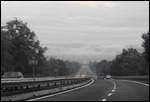

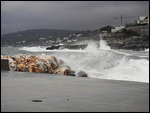
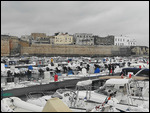



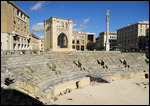
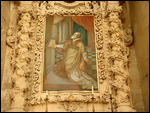
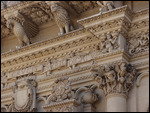


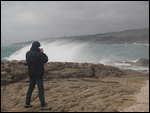

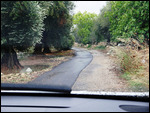
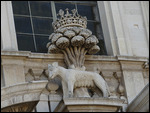





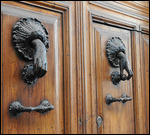

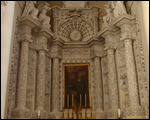
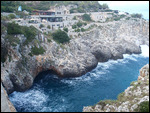
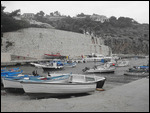
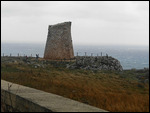
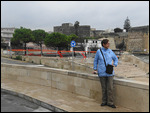
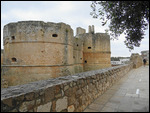

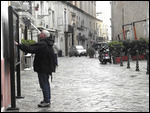
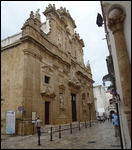
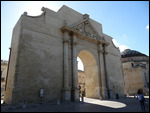
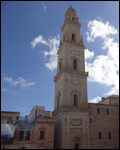
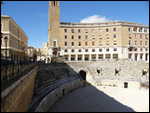

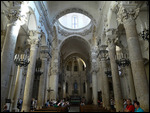
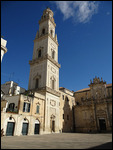
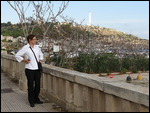
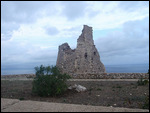
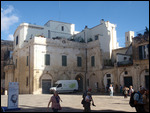
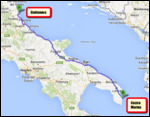
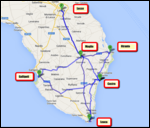
Simon Mark
2013-10-14
Enjoying reading about your adventures. Huge winds in Wellington today!
Gail and Naira
2013-10-14
Hi Itsy bitsy spiders with silver hedgehog doos haha. Really impressed you guys are still making press deadlines to keep us entertained with your journey, it shows true Kiwi commitment. It sounds like the weather is turning unfavorable over there, well its the same here. Wellington city center came to a standstill today with flights, boats and bus schedules being affected. A few not so happy campers staying over at WN airport tonight due to flight cancellations so agree Mother Nature can be very mean and normally without warning. Anyway guys we continue to enjoy your travel blog. As always, travel safe, take care. Gail and Naira
BW & Ki
2013-10-20
We got quite a few chuckles over this latest post. Love the travelogue and can't wait for the next installment :)